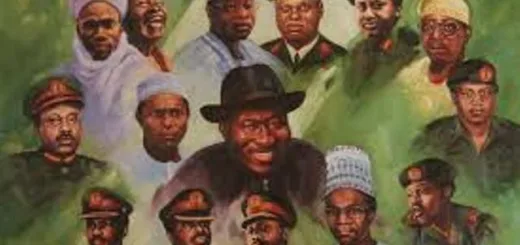Features of 1989 Republican Constitution
After General Muhammadu Buhari took over government on 31 March 1983, some sections of the 1979 republican constitution under which the civilian regime operated, were suspended. Political activities were banned and the constitution remained suspended.
This situation also obtained under the military government of General Ibrahim Babangida who himself seized power in a military coup on 27 March 1985. It was under Babangida government’s transition to civil rule programme that the 1989 Constitution was formulated in a process involving a Political Bureau, Constitution Review Committee (CRC) and the Constituent Assembly.
The political bureau was established on 13 March 1986 with seventeen members. It collated the views of Nigerians on the nation’s political future and wrote a report on this for the CRC. The CRC was inaugurated on 7 March 1987 with forty-six members to use the recommendations of the political bureau in reviewing the 1963 and 1979 republican constitutions.
The CRC produced a constitution which was deliberated upon by a 452-member Constituent Assembly (CA), established on 11 March 1988. This CA submitted its report to the Armed Forces Ruling Council (AFRC), the highest governing body under Babangida administration, which after amending some portions promulgated the 1989 constitution of Nigeria into a decree.
Features of the 1989 Constitution
1. The constitution retained a presidential system of government as in the 1979 constitution.
2. A two-party system was entrenched in the constitution.
3. The minimum qualification to occupy state and national positions such as president, governor and legislators was the secondary school certificate. Minimum ages for each were also specified.
4. Legislators were to be regarded as part-time workers who were all to receive only sitting allowances.
5. The people could withdraw any legislator who no longer enjoyed the confidence of the electorate.
6. The federal capital territory, Abuja would not be regarded as a state.
7. The constitution accorded greater prominence to the autonomy and democratization of the local government. For example, there was an increase in the number of local governments, direct election of chairmen and Councillors and direct allocation of revenue to local governments.
8. It defined the three forms of Nigerian citizenship, viz, citizenship by birth, citizenship by registration and citizenship by naturalization.
9. There were provisions for an independent judiciary and a range of fundamental human rights for Nigerian citizens.
10. To avert the ’two-thirds’ controversy of the 1979 presidential election, the constitution made provision for fractions arising from the computation of votes to be rounded up to the next whole number.
Merits of the 1989 Constitution
1. The two-party system made the choice of the electorate more focused with reduced confusion as in the multi-party system.
2. Minimum qualifications of age and education for candidates eliminated immature and ignorant people from participating in governance.
3. The greater prominence of local governments made room for more rapid development at the local and rural areas.
Demerits of the 1989 Constitution
1. Part-time status and allowances given to legislators made them concentrate more on their private business than on law making.
2. The two-party system limited the choice of both politicians and the electorate, thus restricting democracy.
